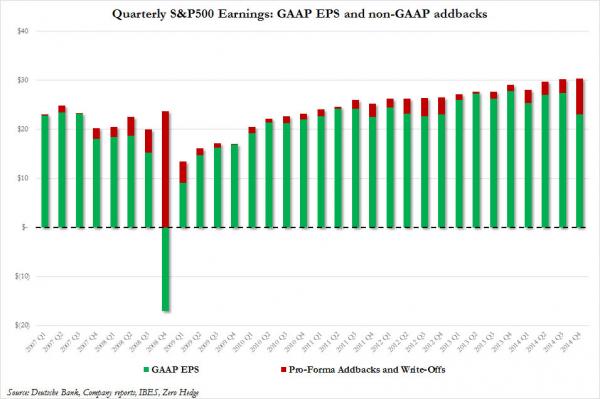written by Bob Lyddon
Introduction
The stimulus package for the Chinese economy, presaged by the People’s Bank of China in late September, has disappointed in its size and detail, but it has achieved something that the EU and UK governments will not thank the Chinese for: it has drawn attention to the scale of China’s ‘shadow’ public sector debt, and their intention to reduce it. The EU and UK plan to increase shadow debt to pay for Net Zero – and hope that the public credit rating agencies do not notice the escalation of the debt service burden, however well it is wrapped up in innovative financial schemes.
The new measure and what was already announced
Our previous article quantified the stimulus package at around 1% of Chinese GDP.1
Investors were awaiting the National People’s Congress in the week of 4th November for further explanation, or expansion of these proposals, or new proposals, or all three. In fact there was nothing new except a yuan 10 trillion (US$1.4 trillion) measure to do what China File has described as ‘funding local governments so that they clean up payment arrears to government workers and local businesses’.2
Reuters explained the background: ‘local governments, facing high debt and falling revenues, have been cutting civil servants’ pay and amassing debts with private sector companies’.3
New measure to be used to pay off debts with private sector companies
The yuan 10 trillion measure – which is 7.9% of GDP – raises the borrowing power of local government entities by yuan 6 trillion for 2025-7, and directs the application of yuan 4 trillion of borrowing already approved for 2024-8.
All yuan 10 trillion will be used to pay off debts in so-called Local Government Financing Vehicles, or LGFVs. These debts are unpaid invoices owed by local government to the private sector, and they have been gathered in some way into these LGFVs, whose legal identity is hazy, despite their having an official name that lends them an appearance of substance. No cash has passed for the invoices to be recorded into an LGFV: cash will only pass when the invoices are paid, which they will be, by the end of 2028.
An LGFV appears to be no more than an extension of the Accounts Payable ledger of the local government entity, but not one backed by sufficiently robust processes that the IMF and the Chinese authorities agree on the ledger balance: accurate quantification is one of the problems of shadow debt.
IMF analysis of Chinese public debt
The yuan 10 trillion measure will result in an increase in explicit local government debt in the Club Sandwich of China’s public debt, and an equal-and-opposite decrease in the LGFV layer.
The IMF recently published this chart of the different levels of indebtedness of the Chinese public sector:

The central government debt is modest by Western standards. Direct borrowing by local government entities – controlled and kept low in the UK – is as large as central government debt. The LGFV debt comes on top of that, and then a nebulous additional layer exists of around 10% of GDP now (i.e. around US$1.8 trillion now, expanding by 2030 to nearer US$4 trillion). The result is a Debt-to-GDP ratio now of around 125%, projected by the IMF to rise to 150% in 2029.
Local government debt before and after the intervention
Explicit local government debt before the intervention was about yuan 30 trillion, or US$4.2 trillion. The LGFV debt is estimated by the IMF at yuan 60 trillion (US$8.4 trillion), or 47% of China’s GDP of US$17.795 trillion.
This is 400% of the figure for the LGFV debt that the Beijing authorities have given out. Finance Minister Lan Foan has quantified the LGFV debt at yuan 14.3 trillion (US$2.0 trillion) and wants it reduced to yuan 2.3 trillion (US$321 billion) by 2028. The measure announced last week delivers yuan 10 trillion of the yuan 12 trillion reduction.
If the IMF’s figure is correct, though, the measure only reduces the debt from yuan 60 trillion now to yuan 50 trillion by 2028, meaning to US$7.0 trillion or to 39% of today’s GDP.
Acknowledgement of the existence of shadow debt is a kick in the teeth for the EU and UK
It is refreshing that a major country admits to the existence of shadow public sector debt at all. This will not please the EU or UK, though. Nor will the extreme difference between the figures given out for it by the IMF and the Chinese authorities.
The EU member states have shadow debt at the level of the EU supranational entities, and in member state-level public sector entities and off-balance-sheet schemes.4
At the end of 2021 Eurostat recorded the EU’s aggregate national debt (the ‘General government gross debt’ of all member states) as €13.0 trillion, which was 90% of EU GDP. The true figure for EU public sector debt, including shadow debt, was nearer to €19.4 trillion, or 134% of EU GDP. Including EU public sector contingent liabilities as well, the total liability rose to nearly €23.2 trillion, or 160% of GDP.
The missing debts include those of the EU itself, such as the €750 billion Coronavirus Recovery Fund, and debts in public-backed schemes like InvestEU. The contingent liabilities include guarantees behind supranational entities like the European Investment Bank and the European Financial Stability Facility.
The UK’s published figures are more comprehensive and its liability towards EU supranational entities has become limited. It does not have, unlike the EU, rafts of public sector entities with their own borrowing powers whose debt service has to be drawn from the same well. What it does have is an off-balance-sheet scheme called Private Finance Initiative or PFI, dating back to the New Labour years of 1997-2010, whereby a £50 billion capital expenditure has resulted in a shadow debt that will have cost £278 billion to finally work off by 2053.5
The only way is up (for the debt) and down (for the credit ratings)
The existence of these shadow debts should cost at least two credit rating downgrades for all of China, the EU member states, all of the EU supranationals, and the UK. But the credit rating agencies appear to be blissfully unaware of the existence of these extra debts, and of their impact on Debt-to-GDP ratios.
This surely cannot continue, as the transition to Net Zero is making copious usage of off-balance-sheet schemes: InvestEU within the EU, the European Fund for Sustainable Development for Net Zero projects outside the EU but at the EU’s risk, and Rachel Reeves’ ‘investments in critical infrastructure’ for which she intends to harness (aka plunder) the UK’s pension schemes.6
Summary
China has admitted to the existence of sizeable shadow debts. Then it has permitted quantifications of their size to be circulated that differ from one another by a factor of 400%.
This draws attention to a key problem of shadow debts: quantifying their size and impact.
Giving such profile to the issue does the EU and UK no favours at all, as shadow debts enable Europe’s illusory economic statistics: Debt-to-GDP ratios are far worse than they appear, because shadow debts are overlooked.
This disconnect props up Europe’s inflated public credit ratings, which require a double-notch downgrade across the board as the first step in the process of grounding them in the total debt burden and in the payment capacity available to service that burden.
1 https://en.irefeurope.org/publications/online-articles/article/chinas-loosening-of-monetary-policy-is-so-small-it-could-be-missed-but-it-both-apes-the-mistakes-of-other-central-banks-and-breaks-the-global-agreements-it-has-made-with-them/ accessed on 14 November 2024
2 https://www.chinafile.com/conversation/how-much-will-new-stimulus-improve-chinas-economic-outlook accessed on 14 November 2024
3 https://www.reuters.com/world/china/china-unveils-steps-tackle-hidden-debt-local-goverments-2024-11-08/ putting the yuan/US$ exchange rate at 7.153, accessed on 14 November 2024
4 Bob Lyddon, The shadow liabilities of EU Member States, and the threat they pose to global financial stability, (London: The Bruges Group, 2023).
5 https://www.lyddonconsulting.com/private-finance-initiative-the-new-labour-financial-catastrophe/ accessed on 14 November 2024
6 https://www.gov.uk/government/news/pension-megafunds-could-unlock-80-billion-of-investment-as-chancellor-takes-radical-action-to-drive-economic-growth accessed on 14 November 2024
Photo by Ryoji Iwata



